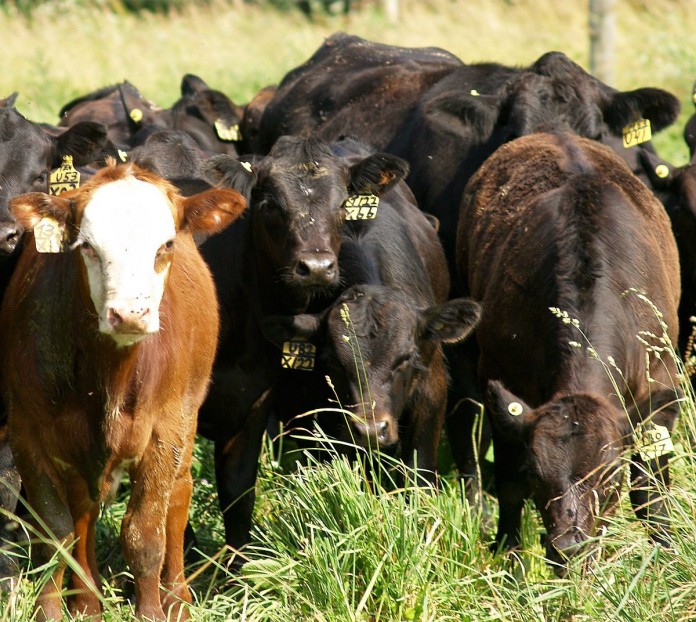(The following was first published on farmdoc daily.)
By Chris Hurt
Purdue University
LAFAYETTE, Ind. — The words, “Another new record for cattle prices” has kind of lost its punch this year because there have been so many new records established. Finished cattle prices began the year at about $135 per hundredweight which were record highs. By March they reached $150, a new record high. In July prices ascended to $160, for the first time ever. Now, finished cattle have touched $170, for the first time ever-a new record high.
What is going on? Will cattle prices just keep setting new records? For how long?
Cattle cycle
The U.S. cattle cycle is well documented back into the mid-1800s. That is a cycle of rising and falling production over 10 to 12 years with a price cycle that is inverse to the production cycle. Studies of those cycles suggest that prices tend to reach their cyclical peak in the early phase of cow expansion as the industry begins to rebuild the herd.
There are two reasons for this: first, the number of market ready animals is already small due to the contraction that has been going on; and second, the retention of heifers and cows further reduces slaughter animal numbers even more thus pulling down beef supplies.
Downward slide
The current cattle production cycle is at the end of an eight year downward slide in numbers that began in 2006 when beef cow numbers were at 32.7 million head. By the start of 2014, those numbers had dropped to 29 million head, a decline of 11 percent. This means there is already a small pool of calves for our beef supply. The second key is reduced female slaughter as producers begin to re-build the beef cow herd. That appears to have started in earnest, especially in the last-half of this year.
Rebuilding the herd
There are two ways in which cattle producers rebuild the herd. The first is by holding on to older cows for another year rather than sending them to market. The current evidence for this behavior is demonstrated by an 18 percent reduction in beef cow slaughter so far this year. Further evidence that this trend is increasing is a 23 percent reduction in beef cow slaughter during the most recent quarter—July through September. In addition, the dairy industry is contributing to reduced beef supplies as milk cow slaughter is down 11 percent year-to-date. The milk industry has also likely begun an expansion phase.
Short-term expansion
Holding on to older cows for another year is a short-term form of expansion that cannot be maintained for multiple years due to the aging of the herd. So, the second way the herd expands is through heifer retention. There is clear evidence that this behavior is also being practiced by both the beef and the dairy industries. Heifer slaughter so far this year is down nine percent and was down 11 percent in the third quarter of 2014.
Female slaughter
How important are these reductions of female slaughter to the total slaughter? Using the year-to-date rate of reductions for all of 2014 would result in heifer slaughter being down 770,000 head, beef cow slaughter down 550,000 head, and dairy cow slaughter down 340,000 head for the year. These sum to nearly 1.7 million fewer females going to market this year and thus lowering slaughter numbers by over five percent.
Reached the peak?
So have cattle prices reached their cyclical peak on the current cycle? The likely answer may be NO! for two reasons. First, the size of each year’s calf crop is still declining so finished cattle supplies will drop at least through 2015 and well into 2016. Second, once herd rebuilding begins, as is now evident, expansion of the beef cow herd generally continues for four to six years. This means beef supplies will be down again in 2015 and perhaps into much of 2016.
Growing supplies
Offsetting the argument for even higher cattle prices to come is the expectation for growing supplies of competitive meats starting in the second quarter of 2015. This is the argument that beef consumers will have lower priced meat and poultry alternatives by the spring of 2015 and therefore new record high cattle prices will become increasingly difficult. To the extent this is true, it may shorten the window of opportunity for new record cattle prices to this fall and winter.
Weak cattle prices?
Current anticipated finished cattle prices derived from futures suggest this same pattern, with prices in the higher $160s for the remainder of the year, then moderately lower prices in the mid-to-upper $160s would be expected into April.
Starting in the spring of 2015, increased supplies of chicken, turkey, and pork will provide consumers with ready alternatives to high priced retail beef and cattle prices may weaken. That weakening of cattle prices in the spring of 2015 is not a collapse, just a failure for cattle prices to keep making new record highs again and again as was the case in 2014.
Record prices
The long-term profit outlook for the beef industry is bright, but the record prices on this cycle may well occur in the next six months.
(The author, Chris Hurt is a professor at Purdue University in the department of agricultural economics. This story was first published on farmdoc daily.)












